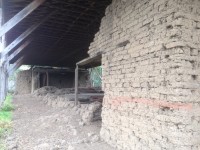This week I discuss one of Sonoma’s own, Mr. Henry Weyl. While most simply pass by Weyl’s buildings extending from the corner of First Street West and Spain, specifically the Sonoma Hotel, Weyl was one of Sonoma’s mover and shakers in the latter part of the 20th century, playing a large role in the early development of our city.
Henry Weyl was born in Bingen on the Rhine, in Germany on May 29, 1834. His parents, Henry and Anna (Beck) Weyl were natives of Bingen, and young Henry followed in his father’s footsteps as a cooper and distiller. Henry left his native Germany in 1854 and set his sights on America. He arrived in New York and obtained a job as a cooper in both New York and Williamsburg, until 1855. He found employment on a whaling ship which took him around Cape Horn to the Pacific Ocean.
Upon arrival in Peru, Weyl left the ship and obtained work as a cooper, blacksmith and carpenter. After a few months, he moved to Ecuador, where he was hired as a carpenter and stair builder. From Peru he headed north to Panama and was hired as a butcher on the steamer Sonora. The Sonora was one of several Pacific mail vessels headed north along the Pacific coast, arriving in San Francisco on December 14, 1860.
Weyl was hired by P. Malloy and worked as a cooper until 1867 in San Francisco, moving to paradise in 1867. Weyl’s first Sonoma land acquisition in 1867 consisted of purchasing two parcels of land on Lot 34, thus owning one of the oldest extant buildings in Sonoma, the Castenada adobe.
Henry Weyl purchased two parcels on Lot 27 in 1871 and one in 1874, situated at the corner of First Street West and Spain. His land acquisition on Lot 27 now totaled about 5 acres. Weyl constructed several buildings including a winery and lumber yard within the five acre parcel. Weyl and his partner Leiding produced 15,000 gallons of wine and 1,000 gallons of brandy in 1877. Total wine production for Sonoma County in 1877 was 2,535,000 gallons.
In 1879 he erected a large two-story building (Sonoma Hotel), containing three storerooms on the first floor and a hall in the upper story. This building was constructed at the corner of first Street West and Vallejo (Spain) Street at the location of a former adobe constructed by Marcus Vaca. In the same year he added to his business enterprises a butcher shop and market with Herman Nanert. Weyl bought Nanert’s share of the business in 1880 and began to operate independently, opening a general merchandise store in 1884.
In 1886, Weyl was involved in a movement to remove the railroad from Spain Street. Many of
Sonoma’s residents fought it’s development and presence in Sonoma, concerned that the railroad would take business out of town. Though objectors began to remove ties in front of their properties, eventually the train came to town as promised. The train operated down Spain street which Henry Weyl objected to. Weyl won a suit in 1886 against the Donahue Railroad and forced the company to obtain new rights outside of town. In 1890, a new depot was constructed immediately north of the Plaza.
Henry Weyl was a member of the City Board of Trustees from 1886-87 and 1893-94, serving as President in 1887 and 1894. Weyl was instrumental in developing City ordinance No. 43, which proposed to fix water rates in the City of Sonoma beginning on July 1, 1893. The ordinance set rates for saloons, livery stables, barber shops, flower gardens, butcher shops and bakeries. Section 2 of Ordinance No. 43 imposed a charge of $2.50 for “neglecting to turn off water or permitting the water to run through hose, sprinkler or faucet.” As President of the Board of Trustees (Mayor) he approved the ordinance on May 3, 1893.
In 1869, he married Miss Mary Knacksatet. The Weyl’s had six boys and two girls. Weyl died on July 5, 1902.


Excellent information but I think you meant the latter half of the 19th century not the 20th??